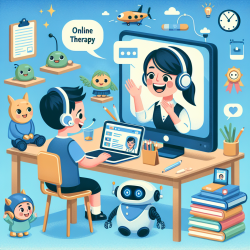In the rapidly evolving field of audiology and speech-language pathology, the quest for more efficient, accurate, and user-friendly methods of assessing speech intelligibility remains a top priority. The groundbreaking work of the Amplification Research Group, as detailed in their study "Towards the Automated Assessment of Speech Intelligibility: Some Results from the Amplification Research Group," provides invaluable insights that can significantly enhance the practice of professionals in this field. This blog explores how practitioners can leverage the findings and methodologies proposed in this research to improve their skills, offer better therapy outcomes, and encourage further exploration in automated speech intelligibility assessment.
The Current State of Speech Intelligibility Assessment
Traditionally, speech intelligibility tests have relied heavily on phonetically-balanced monosyllabic word tests, administered through audiotaped sequences or live voice, and scored manually. While these methods are widely accepted due to their simplicity and cost-effectiveness, they are fraught with limitations. Criticisms include their insensitivity, poor test-retest reliability, susceptibility to word familiarity effects, and the potential for examiner bias in scoring.
The Amplification Research Group's research underscores the need for more sophisticated testing methods that minimize these drawbacks. By harnessing the power of automated, computer-based testing and scoring systems, the study presents a compelling case for a paradigm shift in how speech intelligibility is assessed and interpreted in clinical settings.
Innovations in Automated Testing
The study introduces an innovative system developed for automated speech intelligibility testing, utilizing off-the-shelf components to keep costs low while ensuring high reliability and ease of maintenance. This system, built around an IBM/AT-compatible microcomputer, is designed to adjust the pace of testing to accommodate different listeners, automatically collect and score responses, and minimize examiner workload and error potential.
Specific applications of this system, such as the Nonsense Syllable Test (NST) and Continuous Discourse Rating, are highlighted in the study. These applications demonstrate the system's ability to provide detailed analytical information about a listener's speech understanding capabilities under various conditions, as well as rapid assessments of overall speech intelligibility in real-world listening situations.
Implications for Practitioners
The findings from this research offer several key takeaways for practitioners in the field of audiology and speech-language pathology:
- Embracing Technology: The move towards automated, computer-based testing represents a significant advancement in speech intelligibility assessment. Practitioners should consider incorporating such technologies into their practice to enhance the accuracy and efficiency of their assessments.
- Customizing Therapy: The ability to adjust testing pace and utilize detailed analytical tools allows for more personalized therapy plans. By understanding the specific challenges faced by each patient, practitioners can tailor their interventions for better outcomes.
- Continued Research and Development: The study's success with automated testing underscores the importance of ongoing research and innovation in the field. Practitioners should stay informed about new developments and consider how they can contribute to the advancement of speech intelligibility assessment and therapy.
Conclusion
The work of the Amplification Research Group marks a significant step forward in the pursuit of more effective speech intelligibility assessment methods. By adopting the automated testing approaches outlined in this study, practitioners can improve their skill set, offer more accurate and personalized therapy, and contribute to the broader body of research in audiology and speech-language pathology. The journey towards better understanding and enhancing speech intelligibility is ongoing, and the insights from this research serve as a valuable guide for professionals committed to excellence in their practice.
To delve deeper into the methodologies and findings of this pivotal study, practitioners are encouraged to read the original research paper. For further information, please follow this link: Towards the Automated Assessment of Speech Intelligibility: Some Results from the Amplification Research Group.










